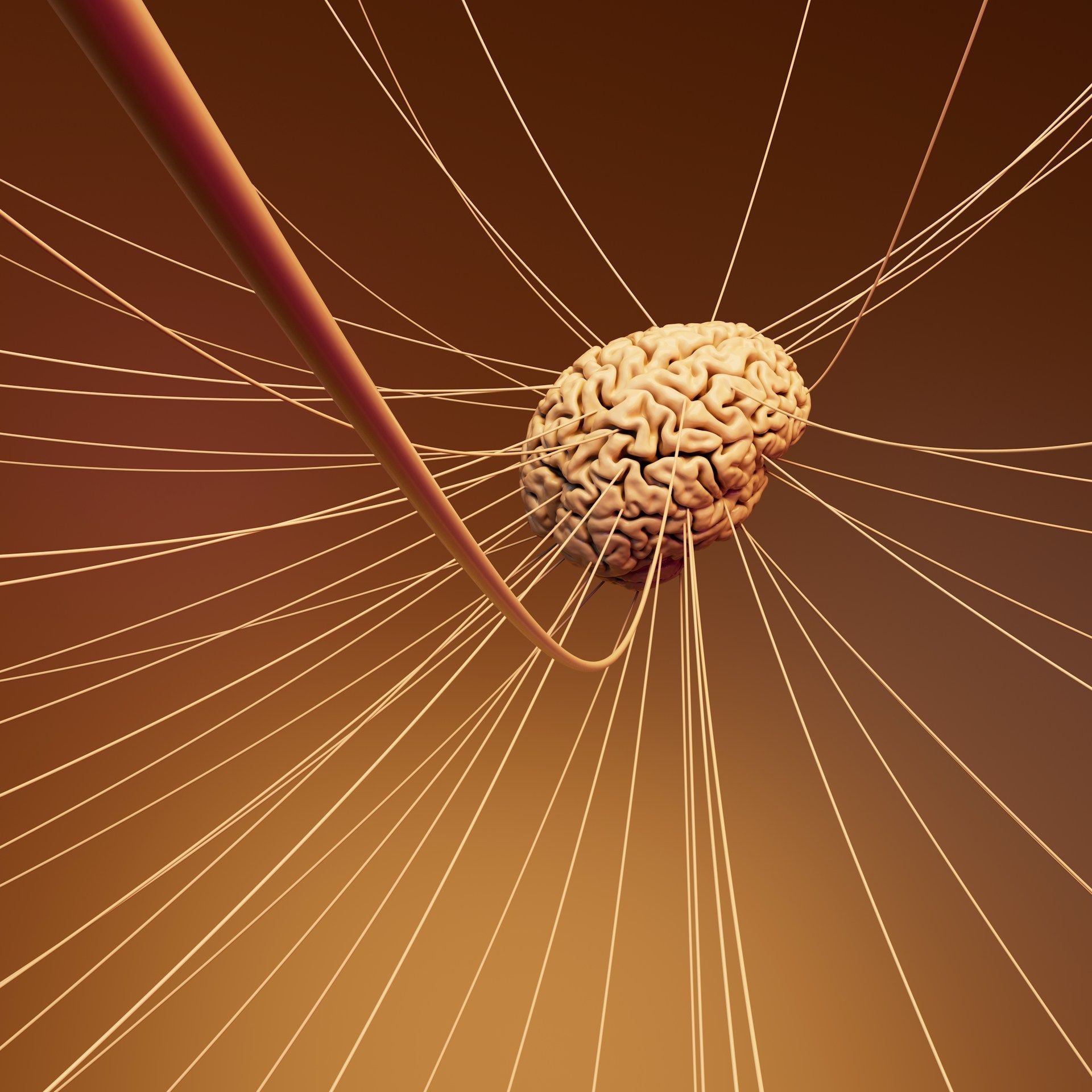Talking to Your Mat Through Your Recovery: Reconnecting With Your Body
This article is the first in a multi-part series of tips for talking to your mat during your recovery from childhood abuse, adult trauma, substance abuse — or all three.
Trauma can nearly sever your connection with your body. However, even if you lose or intentionally shut off this communication channel, unconscious messages continue to flow between your body and brain. The effect can devastate your health, transforming your emotional suffering into physical ailments. Although scientists still do not fully understand how all of these related systems interplay, they have long known that experiencing trauma, especially in childhood, can impact physiological health for your entire lifetime.
Reconnecting with your body on the mat can be a crucial step in re-embracing your overall wellness. It’s also where I began my recovery journey. Therefore, I wanted to offer tips from someone who has been there if you are also using your mat as part of your healing work as you overcome trauma or substance abuse.
Please note: We at Only in Sedona Yoga are not doctors or scientists. We are fellow travelers on a healing journey, sharing what we have learned in the hopes of helping others. Please always consult a licensed medical professional for specific concerns, and remember, we do not offer medical advice, only tips from folks who have been there. Thank you.
The Many Factors That Can Disconnect You From Your Body
Becoming disconnected from your body doesn’t always result from nefarious situations or intent. For example, imagine a nurse in an ER with a patient she has to move. The patient might be several times heavier than her, and doing so may strain her back. There’s a reason those in the medical profession endure more than their fair share of lower back pain, but when seconds count, these dedicated pros seldom think twice about their own safety.
Repetitive Strain Injuries
That said, repetitive strain injuries occur, at least in part, from becoming habitually disconnected from your body. It’s one thing to ignore strain during a triage situation. However, how many office workers force their bodies into ill-fitting chairs day after day? How many cashiers and warehouse workers endure undue strain because their bosses won’t let them have so much as a stool or even a lean against the counter during slow times?
(Incidentally, if you are a business owner who won’t let your employees take a seat to care for their health, yes, I
am judging you. You are abusing the health of vulnerable humans, not even because it’s necessary for profit, but simply because you “don’t like the way a seated employee looks” in most cases. That doesn’t sit well with me. Don’t be surprised if I stop frequenting your establishment. Cruelty isn’t a good look, despite your sense of professional aesthetics).
It’s understandable to disconnect from your body under such circumstances. After all, you have to work to eat — so in a way, you
are
triaging your priorities. However, it’s also unlikely that someone will die if you take the time to requisition a better chair, put on a back brace, or shift positions so that you can sit down for a few moments or perform some light stretches. Even ERs have occasional downtimes.
Fortunately, reconnecting with your body on the mat spills over into daily life, inspiring you to take such actions. By cultivating mindfulness, you become aware of the subtle ways you neglect your physical well-being throughout your daily routine. You gain the ability to recognize the areas of
tightness and tension that are your body’s way of communicating to you, “SOS, help, please, could you kindly fix this situation?”
This awareness then inspires you to make the necessary adjustments. As a result, you decrease your risk of repetitive motion injuries. Plus, you feel better, which can’t help but improve even the grumpiest mood.
The Well-Meant Wishes of Others (or Intentional Gaslighting)
Another factor that can disconnect you from your body, especially if you have a chronic illness, is gaslighting, both medical and non-medical. Yes, the term “gaslighting” gets used a lot these days, but it’s important to have a word to apply to the experience of other people altering your perception so much that you begin to question what’s real.
Gaslighting can be intentional or unintentional. For example, people may say things like, “Oh, it can’t hurt
that bad,” not because they want to make you feel crazy but because
they feel helpless. Recognizing that people can hurt and hurt badly when you are powerless to ease their pain can trigger shame. Other people want to rid themselves of this nasty feeling of shame, so they instead deny and minimize your reality.
The problem is that upon hearing these words, you start to question your reality, too. Even if you are experiencing significant pain, you may try to “soldier through,” with devastating health impacts. You may ignore your pain for the noblest of reasons — not wanting to let others down.
Dear heart, please read this if you read nothing else: Denying that you are in pain when you legitimately
are rarely ends well for you or anyone else. When postponing needed doctor’s visits results in permanent disability, it becomes a lot harder to care for those you love and make a living. Trust me on this one.
Far more insidious is intentional gaslighting. Sadly, it happens even in the medical profession. One need only browse a few physician subreddits to see how patients seeking help for lesser-understood conditions often encounter professionals with outright disdain and contempt for their concerns. These attitudes can have severe consequences, and they often impact women and minorities most egregiously. One woman went a full week with an
undiagnosed heart attack after the hospital dismissed her symptoms.
Standing up to a licensed, educated medical doctor is even harder to do than asserting your truth among friends and family. I know this, too, sadly, from personal experience. While I’m forever sorry that I wasn’t exactly nice to some of the physicians I’ve been assigned over the years, I thank the little stubborn part of me that insisted on certain tests, who refused to take, “you’re probably just anxious and depressed, here, try this offering from our latest drug rep visit” for an answer. Surprise, surprise, I do have damage and a cyst in my brain. I do have a defective mitral valve. And I am autistic. My cardiovascular and nervous systems were misfiring all the time. I was feeling all this pain, I was perceiving the problems — but boy, oh, boy, was I ever disbelieved when I asked for help.
Is it understandable to disconnect from your pain by poo-poohing your symptoms as “nothing” or “anxiety” when your doctor says, “You’re fine?” Of course it is. However, that’s why reconnecting with your body on the mat is so vital. You tune back into
your reality,
your
perceptions, and if they’re still screaming, “something’s amiss,” you know to seek a second opinion.
Physical or Sexual Abuse
While no one likes to talk about it, physical and sexual abuse occur and can severely disconnect you from your body. In some cases, you may intentionally disconnect from yourself as it's the only way to endure the pain. However, even if you purposefully shove down what you feel, Bessel Van Der Kolk is very right in saying the body keeps the score. Chronic pain is incredibly common among abuse survivors, including migraines, fibromyalgia, digestive and bowel problems, allergies, and chronic fatigue.
Physical and sexual abuse can also spur substance use disorders as you attempt to self-medicate your pain. Substance abuse disconnects you from your body by altering your perception and even
creating physiological changes that can be hard to recover from. Many people also dissociate, feeling as if they aren’t truly “real” or “there,” a kind of ultimate disconnect from their tangible reality.
4 Tips for Reconnecting With Your Body on the Mat
Understanding why reconnecting with your body matters is only the first step. How does that look in action? Here’s what you can do.
1. Slow Down
While any style of yoga is good for reconnecting with your body, slower formats, such as restorative or Yin, allow you the freedom of time to truly tune into the effects of each pose. They can form a firm foundation of body awareness by inviting you to explore the connection between breath, body, and movement more intimately. You won’t burn a ton of calories from such practices, but you will reconnect with your body and experience deep relaxation that’s just overall ooey-gooey goodness for your central nervous system.
2. Choose Your Guide Carefully
Watch out for drill instructor-style yoga guides. If they insist you maintain a certain pace or insist on adjusting you in poses against your wishes, you could end up feeling more disconnected from your body instead of reconnecting.
Instead, choose someone who suggests modifications and props but allows you the freedom to move in ways that feel therapeutic for your unique body. Some guides now use cards that participants can place face up or down near their mats that indicate if they are open to adjustments or not. If yours doesn’t, consider suggesting it. Not everyone appreciates a stranger’s touch, even to guide them, and it could make the experience more inclusive for the whole class.
3. Perform a Body Scan on the Mat
Breathing into the area that you focus on in each pose synchronizes your awareness with your physical movement. It also proves the freedom to explore the intricate muscles and connective tissues around each joint using your interoception, your perception of sensations arising from within your physical body. Nurture this awareness, watering it like a seed. For example:
- Do certain poses cause mild discomfort? How can you shift your positioning slightly so that your “ugh” becomes “aah?” Could you add a pillow under a knee or another joint? Would using a strap help you achieve alignment and stretch without strain? Could you back off the intensity just a bit or explore a modification that makes the pose more accessible?
- Do you resist certain poses? Explore why, using gentle curiosity. Instead of demanding an immediate answer, consider any and all possibilities. For example, your hips may grow tight from physical labor. They can also tighten up and cause considerable low-back strain because of mental stress. Is it one or the other? Perhaps a bit of both?
- Conversely, do you adore certain poses? Explore why with the same gentle curiosity.
4. Resist the Urge to Skip Savasana
For many yogis, savasana is the best part of class, the dessert, the cherry atop their yoga sundae. However, some folks who see the practice as a mere physical discipline skip this closing relaxation. Please don’t, especially when reconnecting with your body on the mat. Your final resting pose allows you to absorb and connect with all the positive goodness you’ve created during your session.
Checking back in with yourself during savasana is powerful nervous system healing and the ultimate way to reconnect with your physical self. You’re opening the communication channels wide, declaring, “Talk to me, oh, glorious body of mine, tell me what you have learned and what you have left to share!” Think of it as having a doctor invite you for a coffee chat and then really, truly, deeply listening.
Reconnecting with your body in this way is why Only in Sedona Yoga ends every
Sober Saturday livestream with a body scan inspired by the yoga nidra tradition. It’s an invitation to your body and nervous system to come and talk in a safe, receptive space to someone who wants your healing more than anyone — yourself. As someone who has intentionally disconnected from her body throughout her life and suffered the ill effects of doing so, I’ve found this practice enormously healing. We share what we share in hopes that others do, too.
Reconnecting With Your Body by Using Yoga in Your Recovery
Yoga can be a powerful tool to reconnect with your body during recovery from childhood or adult trauma or substance abuse. Understanding the many factors that lead to a sense of disconnection from your physical self is only the first step. The hard, yet gentle, work of healing takes place on the mat, as you reopen the communication channels between the many systems and cells that make you, well, you, in all of your wondrous glory. It’s a highly individualized healing journey that each person must make alone, but following in the footsteps of those who have been there can hopefully illuminate your path.
References:
1. Houston, Will. “Childhood trauma linked to major biological and health risks.”
UCLA Health. September 17, 2024. Retrieved from:
https://www.uclahealth.org/news/release/childhood-trauma-linked-major-biological-and-health-risks
2. Tariq, Rayhan A., et. al. “Back safety.” National Institutes of Health Stat Pearls. July 22, 2023. Retrieved from: https://www.ncbi.nlm.nih.gov/books/NBK519066/
3. Thompson, Maya L. “Harnessing the power of yoga for muscle recovery: A holistic approach to healing.” Longdom. 2024, Volume 14, Issue 4. Retrieved from: https://www.longdom.org/open-access/harnessing-the-power-of-yoga-for-muscle-recovery-a-holistic-approach-to-healing-1102008.html#ai
4. “From misdiagnosed heart attack to patient advocacy superhero.” Roche. November 21, 2024. Retrieved from: https://www.roche.com/stories/heart-failure-patient-story
5. Van der Kolk, Bessel A. “The devastating effects of ignoring child maltreatment in psychiatry.” BesselvanderKolk.com. March 2016. Retrieved from: https://www.besselvanderkolk.com/uploads/docs/Devastating-effects-of-ignoring-child-maltreatment-in-psychiatry-1.27.2016-Commentary-on.pdf
6. “Alcohol’s effect on health.” National Institutes of Health. June 2025. Retrieved from: https://www.niaaa.nih.gov/alcohols-effects-health/alcohols-effects-body











